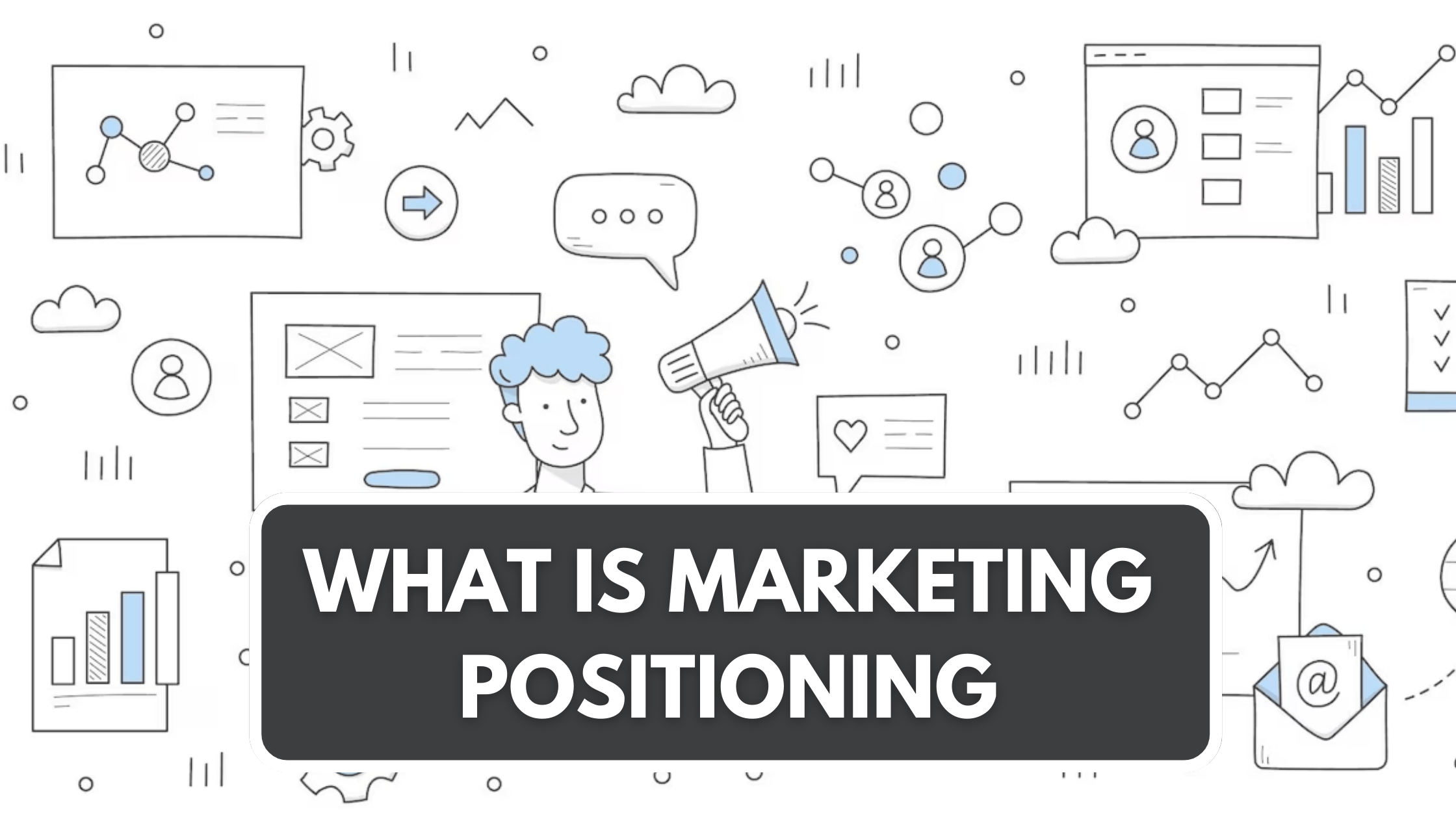What is Marketing Positioning and How Does it Impact Ecommerce Business Success?

Irene Wanja | Aug 11, 2023
Reading Time: 5 minutesYou’re eager to catapult your ecommerce business to new heights, right? Understanding what is marketing positioning is key.
It’s not just about where your product stands in the market; it’s about carving a unique, advantageous space in your audience’s mind.
Dive in, explore different types, and learn how a strategic positioning approach can substantially boost your ecommerce success.
What is positioning in marketing?
You’re probably wondering what positioning in marketing is, well, let’s break it down strategically.
Marketing positioning is the process of establishing your brand or product in the mind of your target audience. It’s a vital part of your brand strategy that aims to make your offering unique and desirable compared to competitors.
Imagine you’re in a crowded market, surrounded by hundreds of similar products. How do you stand out? How do you convince your target audience that your product is the best choice? That’s where marketing positioning comes into play.
It’s about carving out a specific spot in the market landscape, a niche where your brand fits perfectly. It can be based on a multitude of factors like price, quality, usability, or even emotional connection.
What is product positioning?
In the world of product development, it’s your job to understand where your product fits in the market. That’s where product positioning comes into play. It’s a strategic tool designed to carve a distinct spot for your product in the consumers’ minds.
You’re not just selling a product; you’re selling a perception, an image. Your product’s position is how it’s perceived relative to competing products. Whether it’s seen as more high-end, more efficient, or better value, it’s all part of the positioning strategy. This requires thorough market research, understanding your competitors, and, most importantly, knowing your customers.
Your product positioning should align with your overall marketing strategy. If your brand is all about luxury, your product shouldn’t be positioned as a budget-friendly choice. Consistency is key here. It’s a delicate balance, but if done right, effective product positioning can differentiate your product, enhance its value, and ultimately drive e-commerce business success.
Types of positioning in marketing
Let’s dive into the different types of strategies you can employ to carve out a distinct spot for your product in consumers’ minds.
First off, there’s price positioning. Here, you’re either the affordable choice or the luxurious, high-end one. It’s about finding the sweet spot where customers see your product as worth its price.
Next, consider quality positioning. You’re not just selling a product; you’re selling craftsmanship, longevity, or perhaps innovation.
Think also about benefit positioning. What specific advantages does your product offer? Maybe it’s more convenient, healthier, or more sustainable than the competition.
Then there’s competitor positioning. Here, you’re directly positioning your product against a competitor’s, highlighting why yours is superior.
Don’t overlook problem and solution positioning. This strategy identifies a problem your target audience faces and positions your product as the solution.
There’s also cultural symbol positioning – associating your product with a cultural icon or trend.
Lastly, consider celebrity endorsement positioning. This strategy involves hiring a well-known personality to vouch for your product.
Each positioning strategy has its strengths and weaknesses. It’s up to you to decide which fits best with your product and target audience.
What are the benefits of positioning in marketing?
Properly placing a product in consumers’ minds can greatly elevate its perceived value and appeal, making it a crucial aspect of a company’s strategy. By positioning your product strategically, you’re not just selling an item, you’re selling a concept, a lifestyle, a solution. The benefits of this are numerous and impactful.
Firstly, a well-positioned product can lead to increased sales and market share. If customers perceive your product as the best solution to their needs, they’re more likely to choose it over competitors. Additionally, positioning aids in carving out a niche market. When you’re seen as the go-to brand for a particular product or service, you’ve got a captive audience.
Secondly, positioning helps to differentiate your product from others. In a crowded marketplace, standing out is invaluable. It’s not enough to simply have a superior product; you must convince your customers of this superiority.
Lastly, effective positioning can build brand loyalty. If customers associate your brand with quality, innovation, or reliability, they’ll keep coming back. They’re not just buying a product, they’re buying into your brand.
Therefore, positioning is not just beneficial, it’s essential. It’s a strategic tool that you can’t afford to overlook.
How to develop a positioning strategy
Developing a solid strategy for product placement involves a deep understanding of your target audience, thorough research of the competitive landscape, and a clear definition of your brand’s unique selling proposition. You need to pinpoint who your consumers are, what they want, and what makes them tick. It’s this knowledge that’ll guide you in creating a product that not only meets but surpasses their expectations.
Exploring the competitive landscape comes next. You’ve got to identify your competitors, understand their strategies, and assess their strengths and weaknesses. This isn’t about imitation; it’s about finding gaps in the market that you can exploit and establishing a competitive edge.
Finally, defining your unique selling proposition is crucial. You’ve got to know what sets your brand apart. Maybe it’s superior quality, innovative design, or exceptional customer service. Whatever it is, make sure it’s something that resonates with your target audience and is hard for competitors to replicate.
Final Thoughts on what is market positioning
So, you’ve learned a lot about what is marketing positioning, haven’t you? It’s all about carving out a unique spot in the market and making your product stand out.
Remember, it’s not just about being different but also about being better. It’s a strategic move that can propel your ecommerce business to success.
So, go ahead, develop your positioning strategy, and watch as your business benefits from this savvy marketing tool.
Frequently Asked Questions
By strategically positioning your ecommerce business, you’re directly targeting your ideal customers. This resonates with their needs, boosting their loyalty since they feel understood and valued, ultimately enhancing your business’ success.
Common mistakes you might make include not understanding your target market, failing to differentiate from competitors, or not updating your strategy as market conditions change, all of which could hinder your ecommerce success.
Marketing positioning can greatly influence your pricing strategy. By positioning your ecommerce business as high-end or budget-friendly, you’re setting consumer expectations about pricing, directly impacting your sales and overall success.
Absolutely, marketing positioning can help you target new customer segments. It’s about defining your unique value proposition, so you’re not just reaching more people, but the right people, boosting your ecommerce business success.
To reposition your business in the market after establishing a positioning strategy, you’ll need to analyze competitor strategies, identify new customer needs, and adapt your offerings. It’s a strategic shift that demands careful planning.



Table of Contents
What is positioning in marketing?What is product positioning?Types of positioning in marketingWhat are the benefits of positioning in marketing?How to develop a positioning strategyFinal Thoughts on what is market positioningFrequently Asked QuestionsTable of ContentsAbout the authorLeave a Comment Cancel ReplyAbout the author
Irene Wanja
Irene, a skilled Revenue Optimization Specialist for Build Grow Scale, combines an unparalleled focus on user research and a deep understanding of the ecommerce customer journey to orchestrate optimal shopping experiences. With an uncanny knack for detecting and addressing customer pain points through meticulous user testing, she utilizes tools such as moderated user tests, heatmaps, scrollmaps, and clickmaps to fast-track improvements in user experience and usability. Her keen eye for detail aids in swiftly spotting potential issues and implementing solutions, all while working closely with store owners and applying her intricate comprehension of user interactions. Passionate about software and technology, Irene immerses herself in enhancing her clients' business clarity, efficiency, and user satisfaction. Even though the value of user experience doesn't conform to a conventional numerical scale, the tangible outcomes of her work—improved user experience, amplified retention rates, and reduced customer support issues—are testaments to her prowess. Beyond her revenue optimization skills, Irene is a skilled writer and copywriter. She weaves her profound insights into engaging prose, crafting content that not only resonates with diverse audiences but also demystifies the complexities of user experience, consequently benefitting businesses worldwide.




